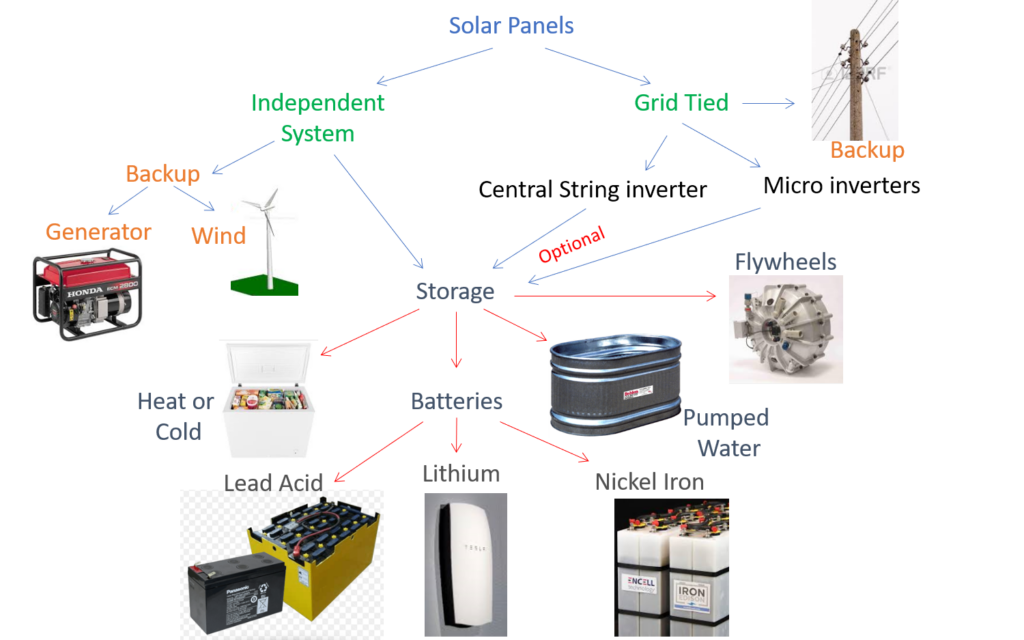Solar Array Energy Storage Resources & Help
100% of anything is very expensive. Don’t feel like a failure if you use some utility power. The point of Net-zero is to contribute as much as you’ve taken by the end of the year. A typical house is expected to need ~5KW (15 to 18 panels), and if you’re charging an electric vehicle, add another 7-8 panels to have enough for a daily charge. If you size a system for your needs during the winter or air conditioning in the summer, you are likely to have a big excess in the spring and fall when you’ll be doing neither (and an excess for which you’ll receive very little from your utility).
We have clients asking about batteries, but a continual supply of a home’s usual load requires a huge and expensive battery. For those worried about emergencies, we suggest a critical load panel for your furnace fan, communications, and a few lights and then powering even these with a portable generator (maybe a Honda EU 3KW). Our utilities are not that unstable. The economics will change as battery prices continue to drop. Prices haven’t budged recently. The supply is going out to California to combat the wind-driven outages and forest fires for the foreseeable future.
Enphase IQ Storage Systems
The new Enphase IQ 8, which has been out since 2022, will generate power proportionate to the sunlight available, regardless of grid connection. You’d have no power at dawn, full power from the array at solar noon, and back down to zero at dusk. These require the Smart Switch and an Enphase Load Controller and will cost about $190 compared to $150 for the IQ7+. The advantage is that they will make your system battery ready as prices for storage comes down, but that will cost you about $2,500 more upfront. The IQ7+ will remain available and can also connect with an Enphase battery system. Solar United Neighbors has a very good overview of batteries.
And there are other choices than electrochemical energy storage.

